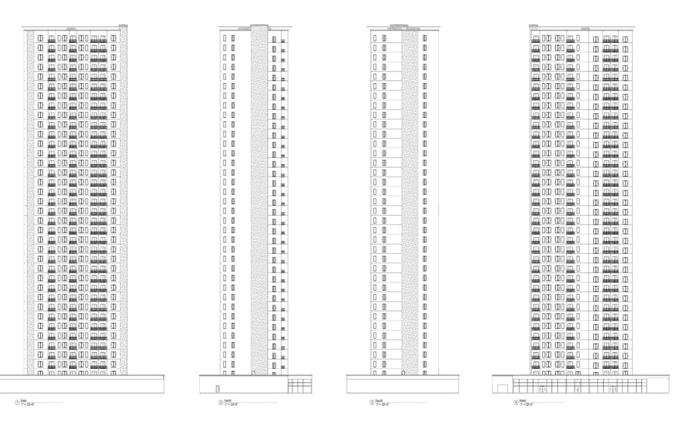
If you wanted to build with cold-formed steel (CFS) framing, how high could you go?
While some say 10 stories is the limit for CFS, what could a structural engineer do if he thought “outside the box”?
The Steel Framing Industry Association (SFIA) decided to find out. The Association commissioned Patrick Ford, P.E., principal at Matsen Ford Design in Waukesha, Wisconsin, and technical director at SFIA, to create a CFS-framed high-rise. In April 2016, at an American Iron and Steel Institute meeting, Ford unveiled the SFIA Matsen Tower, a 40-story residence named after his late partner, John P. Matsen.
The SFIA Matsen Tower has opened the door to a new way of incorporating CFS framing into high-rise buildings.
“It’s time for structural engineers and our future engineers in school to see what can be done,” said Larry Williams, Executive Director at SFIA. “CFS can rise much higher than was ever thought possible and taller than any wood structure ever conceived.”
2.5 billion new urban dwellers
Is there a need to go skyward? Increasingly, the answer is yes.
According to the United Nations (UN), the world’s urban population grew rapidly from 746 million in 1950 to 3.9 billion in 2014. Today, 54 percent of the world’s population lives in cities, and that’s expected to jump to 66 percent by 2050, when an additional 2.5 billion people will need urban housing.
Since urban space is limited, building owners in the future will meet demand by going vertical. And the more ways to go vertical, the better.
Not all architects, engineers, and contractors are aware of CFS framing’s high strength and ductility. Some may think of CFS as a light-gauge material only suitable for interior drywall partition framing and a framing backup for a variety of exterior building finishes.
Is CFS suitable for load-bearing support of a 40-story building? Yes. CFS’s gravity and lateral-resisting properties make it perfect as the load-bearing material for mid-rise structures. While 10 stories is the current perceived height limit for CFS C-studs and joists, the SFIA Matsen Tower proves otherwise.
“While several very good technical review issues [of the tower] have been brought forth, we could formalize the design for construction,” Ford explained.